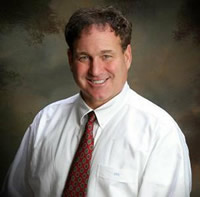1. Stretch your Hamstrings - Lay on your back, thirty times a day in three sets of ten repetitions. Start before getting out of bed, leg straight, circles with your foot.
2. Use a moist heating and on your back, two pillows under your knees for twenty minutes, three times a day. Those lumbar muscles fatigue then tear resulting in spasm. That tear misaligns the sacroiliac joint the most common cause of low back pain actually mimicking a disc herniation. 80% of low back pain is not caused from a herniated disc, but from a S.I joint misalignment and lumbar muscle tearing, so nurture with heat and rest those lumbars and they will support you.
3. Check out the McKenzie protocol for stretching and strengthening especially prone hyperextension, but tips one and two never let anything interfere with these first two.
4. Cardiovascular and proper breathing techniques. Reclined bicycle and fast to regular speed walks at least three times a week. Of course, swimming is the gold standard for non-weight bearing C.V. exercise and toning. Muscles need oxygen to fire.
5. Lean towards a vegetarian whole grain daily food plan.
6. Positive Mental Attitude - Reinforcement every five minutes. Talk to yourself. Everything is O.K. I can do this, I will do it, I am doing it.
7. Avoid Flexion-Bending forward and sitting. If sitting is vital, boost up on a wedge tilting you forward, thereby restoring the natural lumbar lordosis.
8. A healthy neck, upper/mid back and low back are a daily life style of standing, (check out- Alexander Technique), sitting and sleeping correctly. Defy one of these starting in the morning, it all falls apart collectively.
9. Be a proactive, compliant, self-caring manager of your own health and life, of course. Be enthusiastic, pain and poverty are horrific and preventable.
10. Periodical spinal check-ups to any professional practicing manipulative medical procedures. Presently, your chiropractor is the specialist for this and the most versed and experienced. In your insurance company, managed care directories under specialists, this will check for spinal and pelvic misalignment from prior falls or accidents, emotional stress or chemical stress. These misalignments (subluxations) are like dental cavities. These spinal and pelvic misalignments (called subluxation by medicare.com) can be hidden for a long time, then cause acute or chronic symptoms. Have them corrected preventatively at your monthly chiropractic check-up.
Dr. Andrew Rodgers, BS, MS, DC, is a National Certifed Chiropractic Expert Witness with over 38 years of experience. He has worked on over 120 malpractice cases on the proper standard of care and has testified in 30 cases in the last 22 years. Dr. Rodgers is available for complimentary verbal evaluations, offers expedient affidavits and cost-effective testimonies and depositions for chiropractic deviation from standard of care cases nationwide. He represents both Defendant and Plaintiff.
©Copyright - All Rights Reserved
DO NOT REPRODUCE WITHOUT WRITTEN PERMISSION BY AUTHOR.










